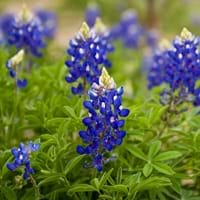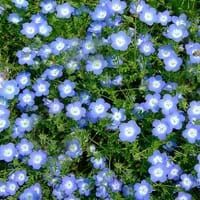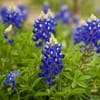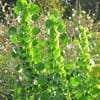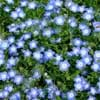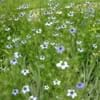Type
Flowering Plants
Flowering Plants, Herbs
Origin
Texas
Western United States, Alaska, California
Types
Ornamental Plant
Nemophila menziesii var. atomaria, Nemophila menziesii var. integrifolia, Nemophila menziesii var. menziesii
Number of Varieties
Not Available
Habitat
Roadsides, Sandy areas
Chaparral, Grassland
USDA Hardiness Zone
3-8
3-9
AHS Heat Zone
9 - 1
Not Available
Sunset Zone
1a, 1b, 2a, 2b, 3a, 3b, 4, 5, 6, 7, 8, 9, 10, 11, 12, 13, 14, 15, 16, 17, 18, 19, 20, 21, 22, 23, 24
A1, A2, A3, H1, H2, 1a, 1b, 2a, 2b, 3a, 3b, 4, 5, 6, 7, 8, 9, 10, 11, 12, 13, 14, 15, 16, 17, 18, 19, 20, 21, 22, 23, 24
Habit
Clump-Forming
Cushion/Mound-forming
Flower Color
White, Blue, Purple
White, Blue, Light Blue, Sky Blue
Flower Color Modifier
Bicolor
Bicolor
Fruit Color
Not Available
Not Available
Leaf Color in Spring
Green, Sea Green
Green
Leaf Color in Summer
Green, Sea Green
Green
Leaf Color in Fall
Not Available
Not Available
Leaf Color in Winter
Light Green
Light Green
Plant Season
Spring
Spring, Summer, Winter
Sunlight
Full Sun, Partial Sun
Full Sun, Partial Sun
Growth Rate
Fast
Very Fast
Type of Soil
Loam, Sand
Loam, Sand
The pH of Soil
Neutral, Alkaline
Acidic, Neutral
Soil Drainage
Well drained
Well drained
Bloom Time
Early Spring, Spring, Late Spring
Early Spring, Spring, Late Spring, Winter, Late Winter
Tolerances
Drought
Drought
Where to Plant?
Bedding, Container, Ground
Ground
How to Plant?
Cuttings, Seedlings
Seedlings
Plant Maintenance
Medium
Medium
Watering Requirements
Medium
Do not water frequently, Never Over-water
In Summer
Lots of watering
Lots of watering
In Spring
Moderate
Moderate
In Winter
Average Water
Average Water
Soil pH
Neutral
Acidic, Neutral
Soil Type
Loamy, Sandy
Loam, Sand
Soil Drainage Capacity
Well drained
Well drained
Sun Exposure
Full Sun
Full Sun, Partial Sun
Pruning
Remove damaged leaves, Remove dead branches, Remove dead leaves
Not Available
Fertilizers
All-Purpose Liquid Fertilizer
All-Purpose Liquid Fertilizer
Pests and Diseases
Red blotch
Red blotch
Plant Tolerance
Drought
Drought
Flower Petal Number
Single
Single
Foliage Texture
Medium
Fine
Foliage Sheen
Matte
Not Available
Attracts
Butterflies
Bees, Butterflies
Allergy
Not Available
Not Available
Aesthetic Uses
Showy Purposes
Beautification, Bouquets, Showy Purposes
Beauty Benefits
Not Available
Not Available
Environmental Uses
Air purification
Air purification
Medicinal Uses
Not Available
Pain killer
Part of Plant Used
Flowers, Leaves, Seeds
Flowers
Other Uses
Animal Feed, Culinary use, Showy Purposes
Not Available
Used As Indoor Plant
Yes
No
Used As Outdoor Plant
Yes
Yes
Garden Design
Bedding Plant, Hanging Basket
Bedding Plant, Container, Hanging Basket, Mixed Border, Wildflower
Botanical Name
LUPINUS subcarnosus
NEMOPHILA menziesii
Common Name
Bluebonnet, Texas Bluebonnet
Baby Blue Eyes
In Hindi
texas bluebonnet
Baby Blue Eyes Plant
In German
texas Blaue Lupine
Baby Blue Eyes Pflanzen
In French
texas bluebonnet
bébé yeux bleus usine
In Spanish
texas Bluebonnet
bebé ojos azules planta
In Greek
texas bluebonnet
μωρό μπλε μάτια των φυτών
In Portuguese
texas bluebonnet
bebê olhos azuis planta
In Polish
texas bluebonnet
dziecko niebieskie oczy roślin
In Latin
Texas lory
baby blue eyes plant
Phylum
Magnoliophyta
Not Available
Class
Magnoliopsida
Magnoliopsida
Order
Fabales
Not Available
Family
Fabaceae
Boraginaceae
Clade
Angiosperms, Eudicots, Rosids
Angiosperms, Asterids, Eudicots
Tribe
Genisteae
Not Available
Subfamily
Faboideae
Hydrophylloideae
Number of Species
Not Available
Importance of Texas Bluebonnet and Baby Blue Eyes Plant
Want to have the most appropriate plant for your garden? You might want to know the importance of Texas Bluebonnet and Baby Blue Eyes Plant. Basically, these two plants vary in many aspects. Compare Texas Bluebonnet and Baby Blue Eyes Plant as they differ in many characteristics such as their life, care, benefits, facts, etc. Every gardener must at least have the slightest clue about the plants he wants to plant in his garden. Compare their benefits, which differ in many ways like facts and uses. The medicinal use of Texas Bluebonnet is Not Available whereas of Baby Blue Eyes Plant is Pain killer. Texas Bluebonnet has beauty benefits as follows: Not Available while Baby Blue Eyes Plant has beauty benefits as follows: Not Available.
Compare Facts of Texas Bluebonnet vs Baby Blue Eyes Plant
How to choose the best garden plant for your garden depending upon its facts? Here garden plant comparison will help you to solve this query. Compare the facts of Texas Bluebonnet vs Baby Blue Eyes Plant and know which one to choose. As garden plants have benefits and other uses, allergy is also a major drawback of plants for some people. Allergic reactions of Texas Bluebonnet are Not Available whereas of Baby Blue Eyes Plant have Not Available respectively. Having a fruit bearing plant in your garden can be a plus point of your garden. Texas Bluebonnet has no showy fruits and Baby Blue Eyes Plant has no showy fruits. Also Texas Bluebonnet is not flowering and Baby Blue Eyes Plant is not flowering . You can compare Texas Bluebonnet and Baby Blue Eyes Plant facts and facts of other plants too.
